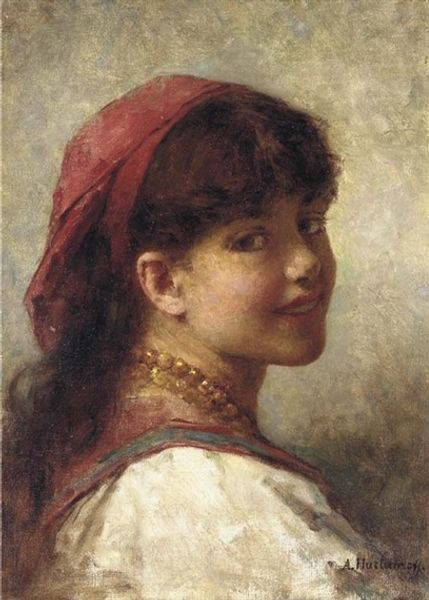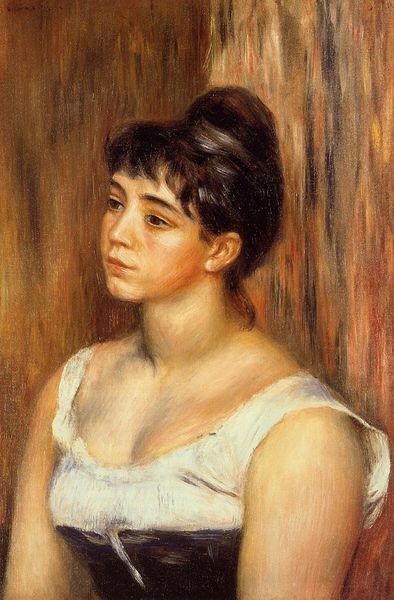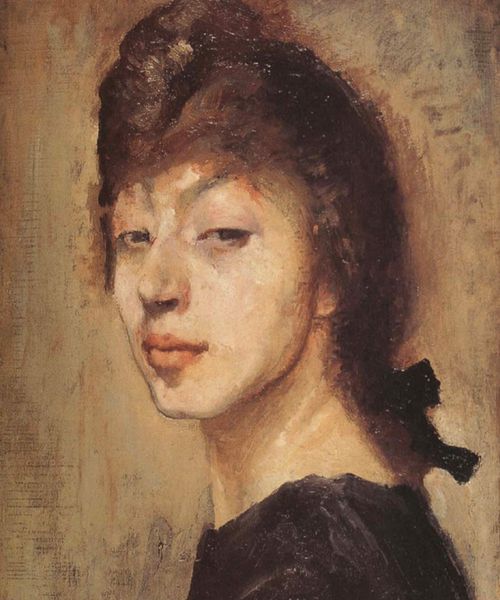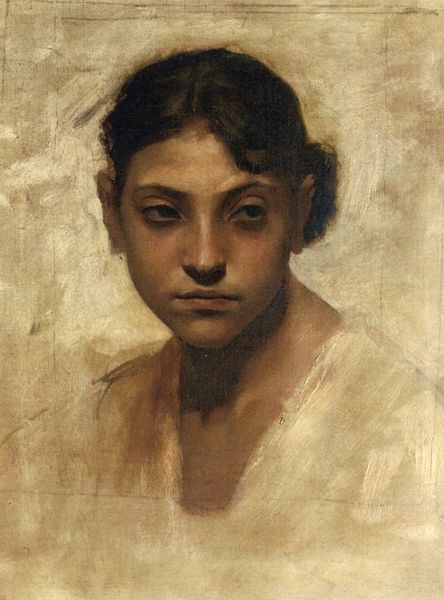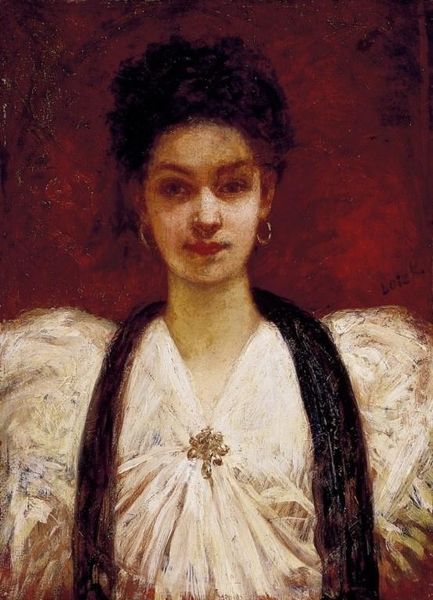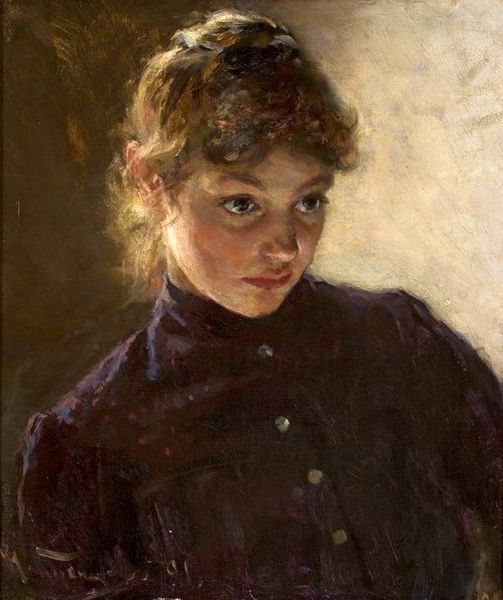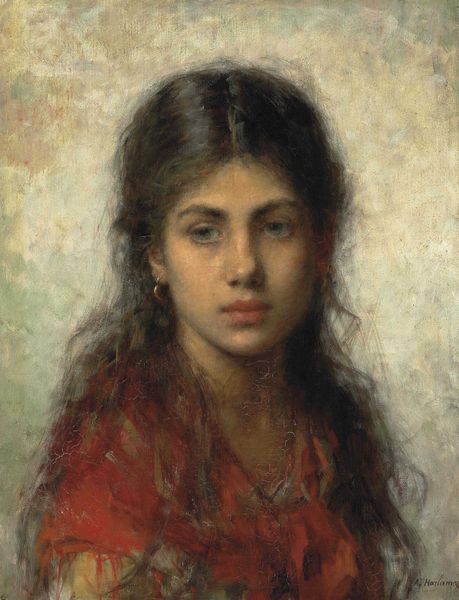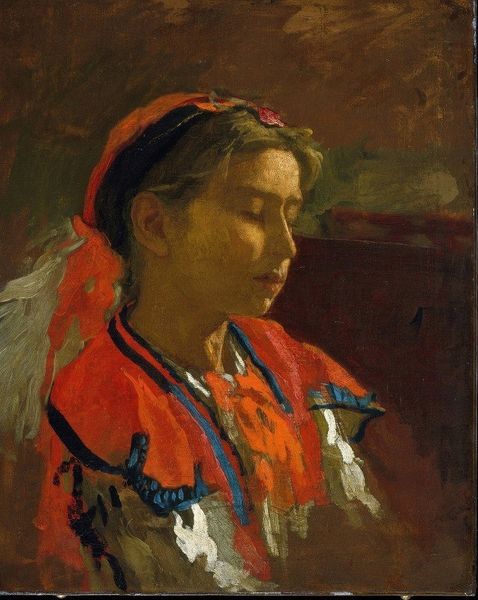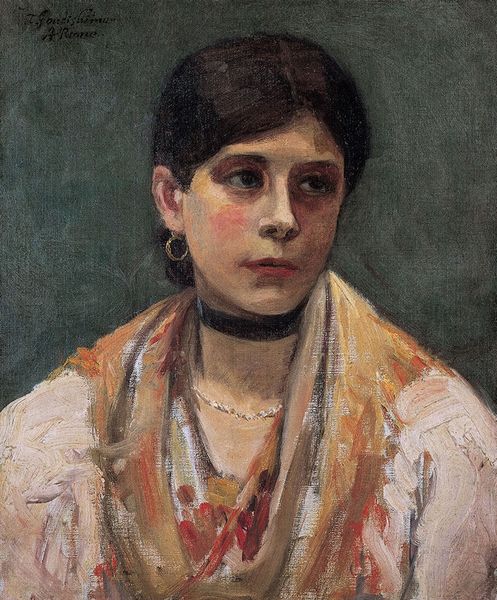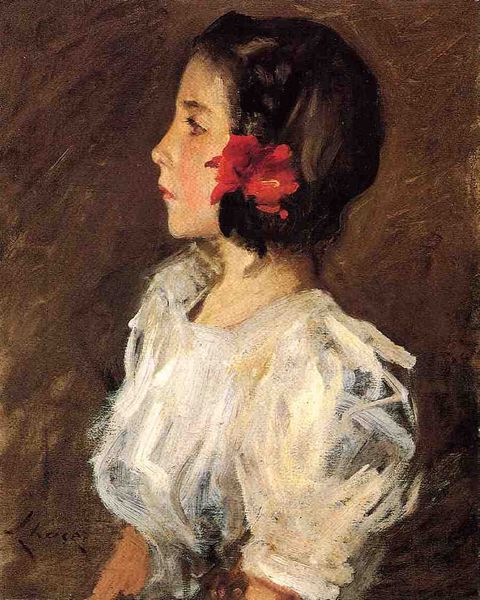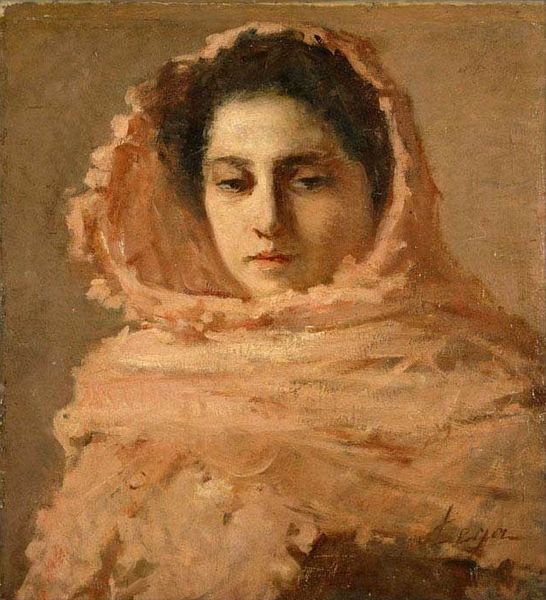
Dimensions: 43.2 x 30.5 cm
Copyright: Public domain
Curator: This is John Singer Sargent’s "Head of a Capri Girl," an oil on canvas portrait painted in 1878. Editor: It’s strikingly intimate, almost unsettlingly so. Her gaze is direct, but there's also something veiled, like she’s holding back. The brushwork, especially in the background, is so loose it almost vibrates, adding to this sense of unease and untold story. Curator: The "Capri Girl" represents more than just a simple portrait. Sargent’s choice to depict a young woman from Capri reflects a fascination with the exoticized "other," a common theme during the late 19th century. She's presented in a romantic, almost timeless way, but her red headband might also represent an ancient and perhaps more complex, earthy symbolism of femininity. Editor: Exactly. It’s important to remember how these portrayals were often loaded with the imperialist gaze. The very act of naming her as a 'Capri Girl’ rather than an individual flattens her identity, transforming her into a symbol of the location itself, rather than a specific person with her own thoughts and her own agency. The work performs as a document to look at power relationships between artist and sitter, also colonial narratives embedded in that specific moment of European history. Curator: Indeed, although there’s also the simple delight in capturing a striking young woman. The delicate rendering of her features, especially her dark eyes and the play of light on her skin, evokes the Renaissance "bella" portrait. Sargent does this while foreshadowing impressionistic looseness. So she becomes an archetype, carrying those earlier signs forward. The hoops act like shining mirrors on her expression. Editor: While her allure is undeniable, to only read the painting this way is a miss. By celebrating its visuality only, we may gloss over that the subject may not have chosen how she was presented. Consider what messages and meanings become part of this artistic endeavor. Does it invite empowerment or does it further existing hierarchical systems that privilege male or colonialist perspectives? Curator: Such critical context expands how we look and find. Editor: Precisely.
Comments
No comments
Be the first to comment and join the conversation on the ultimate creative platform.

